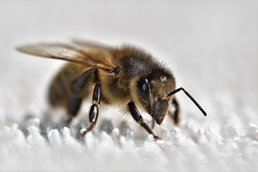
When a bug is zapped, it is blown into many fragments which become airborne, up to a distance of around 7 feet. Yes, this is a gross thing to think about. The problem is that these fragments also contain many harmful bacteria, which also becomes airborne. This means that anyone in this radius has the potential to breathe in this harmful bacterium. Think about what this could mean if a bug zapper is situated over a food preparation area?
Another issue with bug zappers is that they might not prevent you from being bitten from certain types of flying insects. A mosquito, for example, although it is attracted to light, is more attracted to humans and animals. This means you will probably still be bitten by one even if you have this type of repellent. Bug zappers will also eliminate insects that are much needed for the preservation of the environment, such as bees.
As we can see, then, while bug zappers are very effective, you might want to think about the best place to position one so that it won’t cause harm to humans and also so that it protects those insects that are so important for our environment.

 RSS Feed
RSS Feed